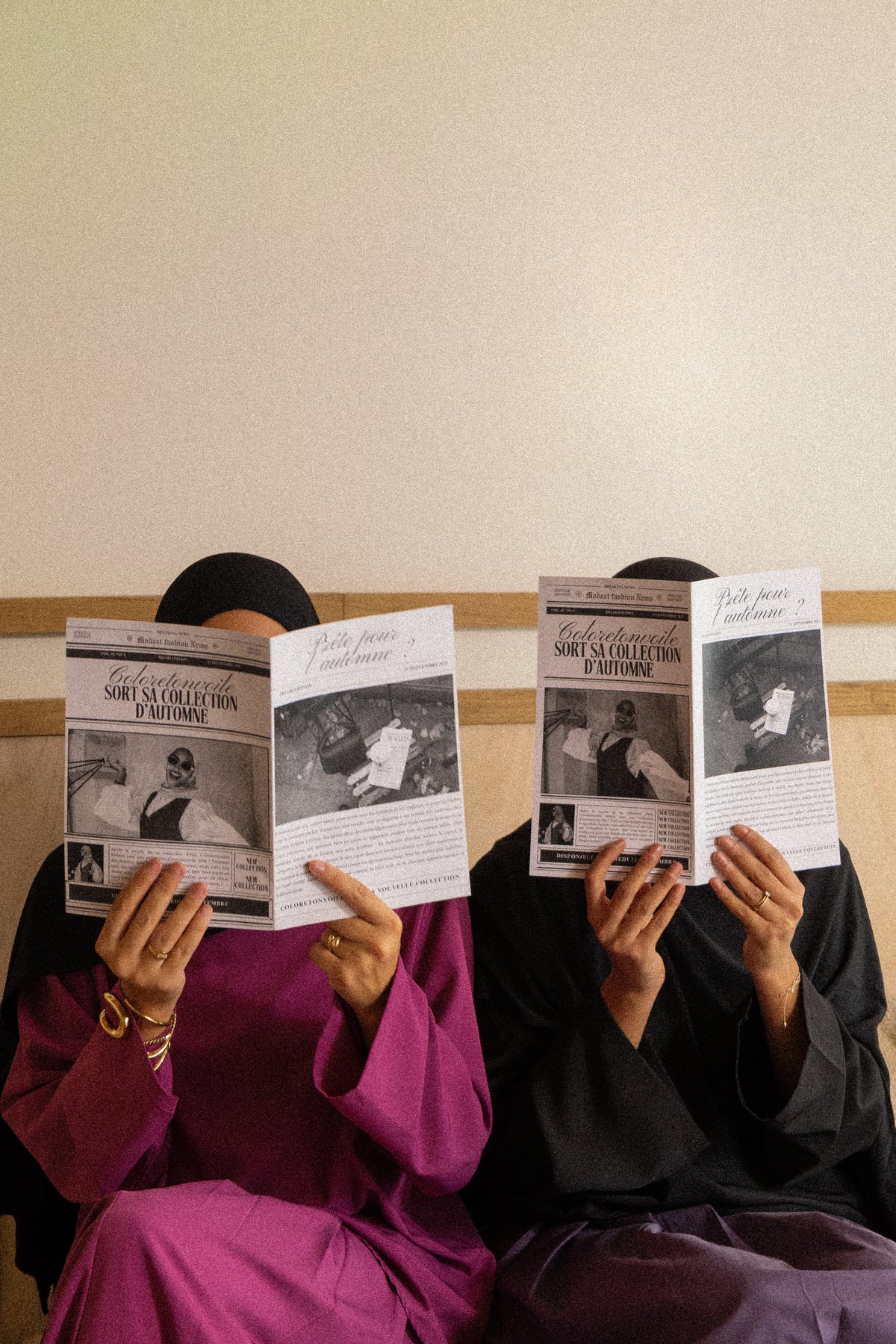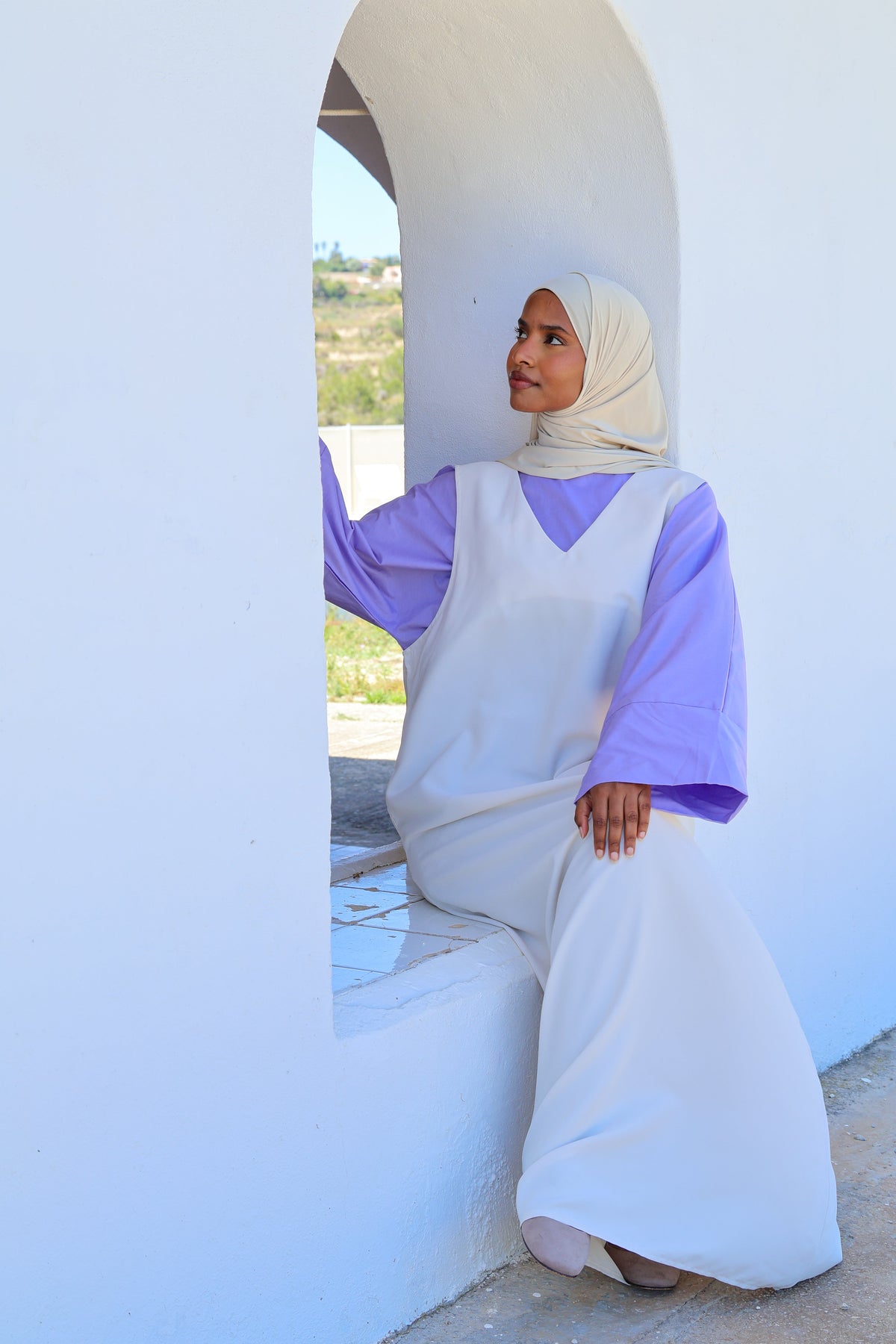The Origins of Modest Fashion and Its Evolution to Today
Modest fashion is more than just an aesthetic trend. It is a reflection of a philosophy that combines style with cultural, religious and social values. This fashion, which emphasizes modesty while remaining elegant, has spanned centuries and adapted to different eras and cultures. While modest fashion is growing in popularity around the world today, its origins are deep and varied, rooted in ancient religious and cultural traditions. Here is a historical journey through the origins and evolution of this movement.
1. The Ancient Origins of Modest Fashion
The history of modest fashion goes back centuries, long before the emergence of modern movements. Since the earliest civilizations, clothing has played a symbolic role in representing modesty, particularly among women. In ancient societies, clothing was used to mark social distinctions, but also to respect codes of modesty.
-
Ancient Egypt : Egyptian clothing was often simple, but women wore covering dresses, respecting a certain modesty. However, there was a distinction between social classes, with royal and noble women tending to wear more elaborate dresses, while remaining within the limits of modesty.
-
Greek and Roman traditions : In ancient times, although nudity was common in certain contexts (such as sports or art), Greek and Roman women wore covering garments, such as the peplos and stola , which largely covered the body, in keeping with the values of modesty and restraint of these societies.
2. Modest Fashion in the Middle Ages and the Renaissance
In the Middle Ages, modest fashion was strongly influenced by the Christian religion, which advocated modesty as an essential virtue. Clothing was long and covering, largely for religious reasons. Both clergy and laity considered modest dress necessary to avoid temptation and to respect religious teachings.
-
The Christian Middle Ages : Women wore long dresses, often accompanied by veils. These garments were designed to conceal the body and avoid any form of exposure. Veils were particularly popular, not only as a symbol of modesty, but also of social status.
-
The Renaissance : While the Renaissance saw the birth of more ornate styles, modesty remained a basic principle, especially among noble and religious women. Dresses of this era were long, with often discreet necklines and long sleeves. The clothes reflected the ideal of modest beauty.
3. The 18th and 19th Centuries: Modesty Through Social and Cultural Challenges
From the 18th century onwards, European fashion underwent major changes. The Industrial Revolution, the rise of the bourgeois classes and new social ideologies changed clothing standards. However, modesty remained present, particularly in the more conservative social classes and in religious societies.
-
The 18th Century and Corsets : Although the corset became a symbol of fashion and femininity, period dresses and clothing still provided ample coverage of the body. Emphasis was placed on the waist, but the structure of the dress, often with long sleeves and long skirts, remained in keeping with values of modesty.
-
The 19th Century and the Victorian Era : It was during the 19th century, particularly during the Victorian era, that modest fashion reached its peak in the West. Long dresses, corsets, full skirts, and high-necked tops were essential elements of the female wardrobe. Modesty was closely linked to virtue and honor, and clothing of the time was designed to reflect these qualities.
4. The 20th Century: Transformations and a Reaffirmation of Modest Fashion
The 20th century was marked by upheavals in fashion, with radical changes in styles and concepts of femininity. Women gained independence, and clothing gradually freed itself from the constraints of strict modesty, particularly with the fashion revolutions of the 1920s, and later through the feminist movements.
However, despite these developments, modest fashion never disappeared, it simply took a different form, influenced by distinct cultural and religious currents.
-
The 1950s and 1960s : The rise of more casual dress and the advent of bolder styles, such as sleeveless dresses and shorter skirts, marked a break with the modesty standards of previous generations. However, in religious and conservative communities, modest fashion continued to thrive.
-
Islam and Modern Fashion : Beginning in the 1970s and 1980s, with the rise of the Islamic movement and the reaffirmation of religious values, the hijab and abayas appeared on the catwalks, in response to a growing need for modesty in fashion. Modest fashion has gained visibility, particularly in Muslim countries, but also in Muslim communities around the world.
5. Modest Fashion Today: A Global Movement
In the 21st century, modest fashion is undergoing a revolution. Initially seen as a fashion reserved for religious communities, modest fashion is now a global movement that transcends cultural and religious boundaries. Renowned designers, such as Dolce & Gabbana, H&M and Zara, have incorporated modest fashion collections, attracting a diverse clientele.
-
Social media and digital influence : Platforms like Instagram and Pinterest have played a crucial role in popularizing modest fashion . Modest bloggers and influencers, such as Dina Tokio or Habiba da Silva, have transformed the trend into a global phenomenon, proving that being modest doesn’t mean giving up on style.
-
Inclusivity and diversity : Today, modest fashion is distinguished by its inclusivity, encompassing not only clothing inspired by Muslim traditions, but also styles adapted to Christian, Jewish and other cultures. It is aimed at all those who wish to combine respect for their beliefs or values with a modern aesthetic.
Conclusion: A Fashion in Perpetual Evolution
From its ancient roots to its current flourishing, modest fashion has spanned the ages, adapting to social, cultural and religious changes. The movement has evolved to become a symbol of freedom, self-expression and self-respect. As it continues to grow and diversify, modest fashion remains a bridge between generations, cultures and beliefs, offering all women the opportunity to feel beautiful, respected and authentic.


